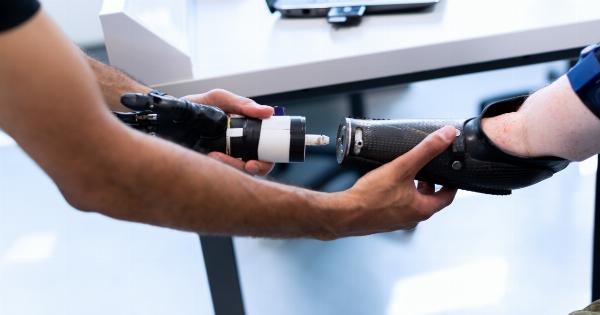A groundbreaking development in the field of neuroscience has allowed a paralyzed man to walk again using a mind-controlled exoskeleton.
This cutting-edge technology holds promise for the millions of individuals around the world who suffer from spinal cord injuries and mobility impairments.
The Science behind the Exoskeleton
The mind-powered exoskeleton works by harnessing the power of the human brain and decoding its signals. By placing electrodes on the surface of the brain, scientists can record and interpret the electrical activity produced by neurons.
These signals are then analyzed by advanced algorithms, which translate them into movement commands that drive the exoskeleton.
Overcoming Paralysis with the Mind
For individuals affected by paralysis, the brain’s ability to control the body’s movement is disrupted due to a spinal cord injury. However, the mind remains intact and continues to generate motor commands.
The mind-powered exoskeleton taps into this unutilized potential, enabling paralyzed individuals to regain their mobility.
Mind-Body Interface
The mind-powered exoskeleton is built upon the concept of a mind-body interface, where the brain’s signals are translated into actions in the physical world.
This interface not only allows users to walk but also to perform a range of other activities, such as grasping objects and manipulating their immediate environment.
Training the Brain
Training plays a crucial role in the successful use of the mind-powered exoskeleton.
Since the brain-machine interface relies on recognizing and interpreting specific brain signals associated with movement, users must undergo a period of training to establish a strong connection between their intentions and the exoskeleton’s response.
Early Success Stories
Several individuals who have participated in clinical trials and training programs involving the mind-powered exoskeleton have reported remarkable progress.
One such success story is John Peterson, a 34-year-old athlete who was left paralyzed from the waist down after a car accident. After months of training, John has regained the ability to walk short distances and even participate in athletic events.
Improving Quality of Life
The mind-powered exoskeleton has transformative potential for individuals living with paralysis. By restoring mobility, this technology has the power to improve their overall quality of life.
The ability to walk and engage in daily activities independently can enhance their physical and mental well-being, boost their self-confidence, and facilitate their integration into society.
The Future of Mobility
The mind-powered exoskeleton represents a significant step forward in the field of mobility assistive devices.
As scientists continue to refine the technology, they aim to make it more lightweight, intuitive, and accessible for a wider range of individuals. This could include people with various forms of paralysis, muscular dystrophy, and other mobility impairments.
Challenges and Limitations
While the mind-powered exoskeleton shows great promise, there are still challenges and limitations to overcome. The technology currently requires invasive brain surgery to implant the necessary electrodes, which may not be suitable for everyone.
Additionally, the exoskeleton’s complexity and high cost can pose barriers to widespread adoption.
The Ethical Implications
As cutting-edge neurotechnology like the mind-powered exoskeleton continues to evolve, it raises important ethical considerations.
Issues such as informed consent, privacy, and the potential for misuse of brain data need to be carefully addressed to ensure that this technology is used ethically and responsibly.
Mind-controlled Exoskeletons Beyond Mobility
While mind-powered exoskeletons are primarily designed to restore mobility to individuals with paralysis, their potential applications extend beyond walking assistance.
Researchers are exploring the use of similar mind-controlled technologies in areas such as rehabilitation, virtual reality, and even for augmenting the capabilities of able-bodied individuals.
Conclusion
The mind-powered exoskeleton represents a remarkable breakthrough in the field of neuroscience and mobility assistive devices.
Its ability to restore mobility to paralyzed individuals has the potential to improve their overall well-being, independence, and integration into society. With further advancements and refinements, mind-controlled exoskeletons could revolutionize the way we approach and address mobility impairments in the future.





























